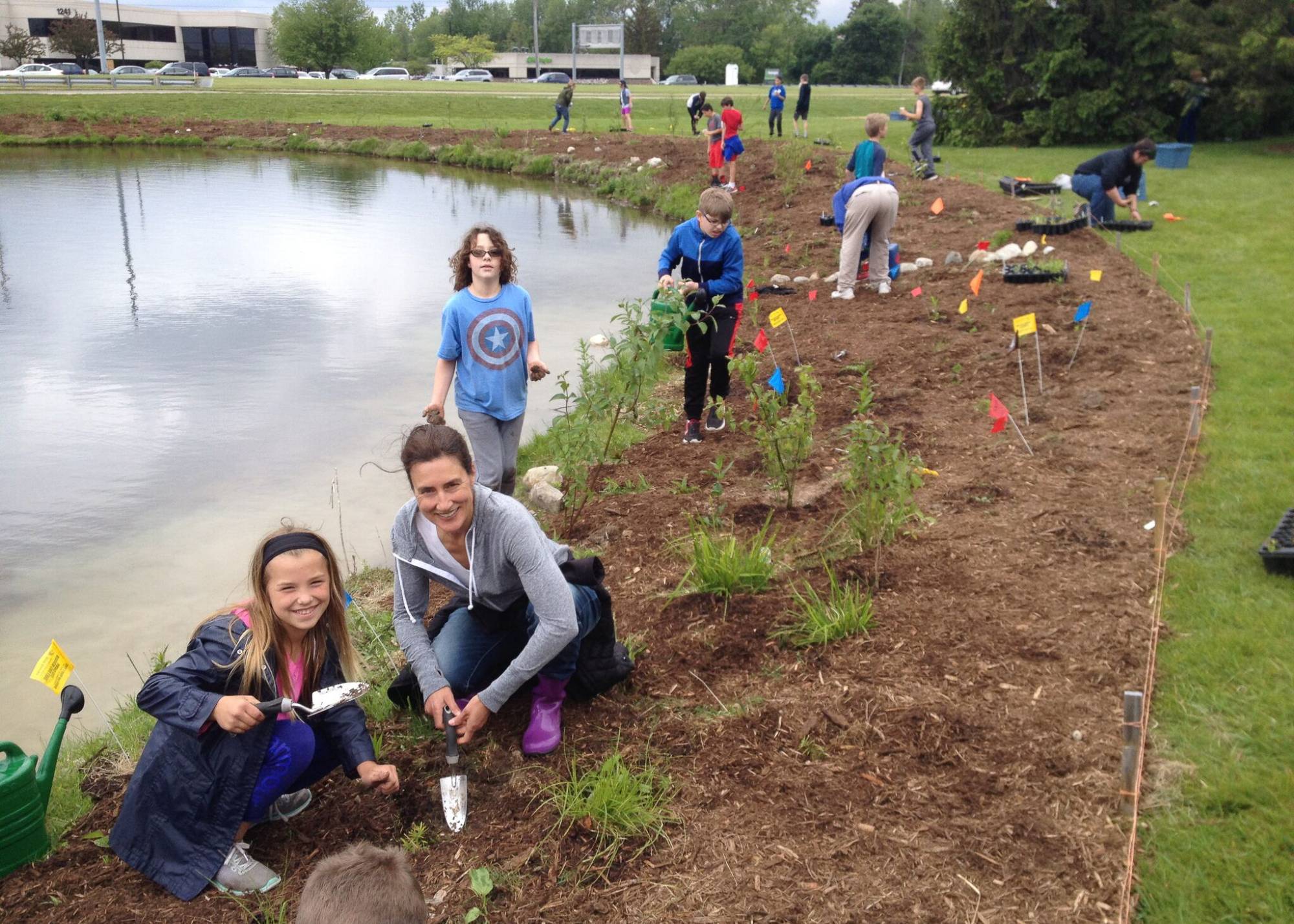Rain Gardens

Would rain gardens benefit your community?
What is it?
Rain gardens (sometimes called rainscapes) are specially designed to capture rainwater from rooftops, streets, parking lots, and other hard surfaces. They usually involve removing some of the soil to create a trough of bowl. This helps capture the rainwater and keep it in the garden. Rain gardens also usually use native plants or other plants that have long roots and are good at helping water soak into the soil. For the best success, you will want to make sure your rain garden is the right size for the volume of water that will be flowing into it.
Rain gardens are often used by cities, businesses, and other organizations that are required to manage their stormwater. For these rain gardens, a professional engineer must design and certify the rain garden to make sure it can handle the volume of stormwater it receives. In some cases, a rain garden might need a layer of rocks below the soil or a drain that allows excess water to enter the storm sewer. Additional adjustments might be required, depending on the site.
How much would it cost?
The cost of a rain garden depends on the size and how it is designed. For a small rain garden in your yard, you would want to use about one plant per square foot. Your cost would be about $3 - $10 depending on the cost of the plants. Technical rain gardens created by engineers can cost $1,000 or more.
What long-term maintenance is required?
The garden should be weeded and watered about once a week for the first 3-5 years. You can reduce how often you weed and water as the plants grow and become more established in their new home. You might need to occasionally thin out plants or “edit” the garden if some plants are crowding out others.
Who are some potential partners?
-
Property owner to give permission for creating a rain garden
-
Plant nursery to provide plants
-
Design expert
How could I determine if the project is successful?
-
Evaluate the growth and condition of the plants
-
Calculate the quantity of pollutants removed
Where can I find more information?
-
Contact your local conservation organization for more information about designing and installing a rain garden.
-
Read more about rainscaping and rain gardens and learn how to design your garden from our Partner the Lower Grand River Organization of Watersheds.
- Check out this rain garden example in Grand Rapids, Michigan
